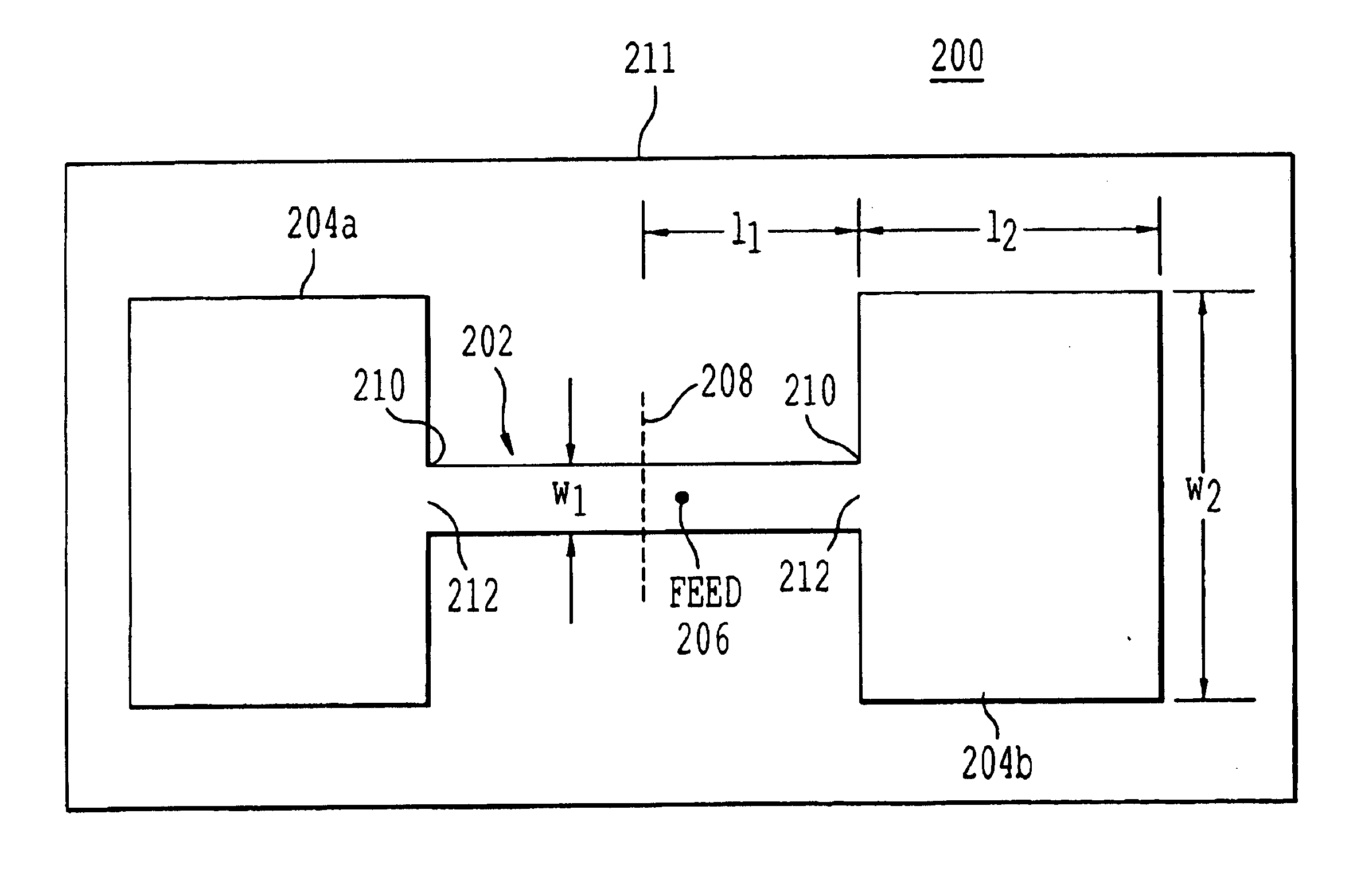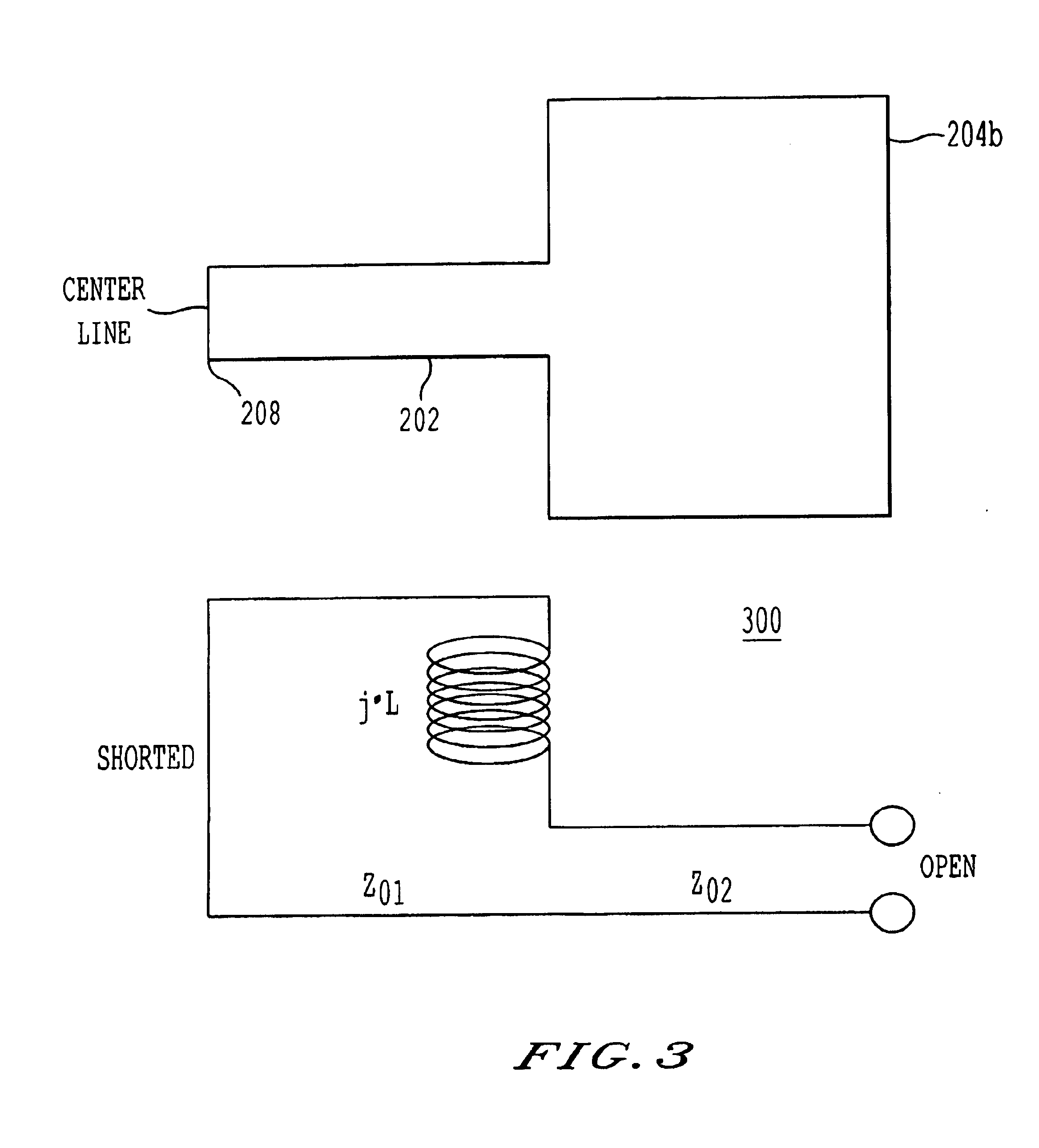Microstrip antenna employing width discontinuities
a microstrip antenna and discontinuous technology, applied in the field of microstrip antennas, can solve the problems of losing efficiency of conventional microstrip antennas at lower frequencies, and achieve the effects of reducing the size of microstrip antennas, and increasing the width
- Summary
- Abstract
- Description
- Claims
- Application Information
AI Technical Summary
Benefits of technology
Problems solved by technology
Method used
Image
Examples
Embodiment Construction
Obviously, readily discernible modifications and variations of the present invention are possible in light of the above teachings. It is therefore to be understood that within the scope of the appended claims, the invention may be practiced otherwise than as specifically described herein.
Referring to FIG. 2, there is shown a microstrip antenna 200 having a first patch 202 having a pair of edges 210. The first patch 202 includes a width w1 and a resonant length l1, wherein l1 is designated to indicate half of the resonant length of the first patch 202. The first patch 202 is flanked on either side of the edges 210 by a pair of patches 204a, 204b of resonant length l2 and width w2, the width w2 being larger when compared to the width w1 of the first patch 202. While the patches 204a, 204b are preferably identical, a tolerance of + / 10% size difference is believed to be acceptable. The first patch 202 is connected to patches 204a, 204b at junctions 212. The junctions 212 are placed symm...
PUM
 Login to View More
Login to View More Abstract
Description
Claims
Application Information
 Login to View More
Login to View More - R&D
- Intellectual Property
- Life Sciences
- Materials
- Tech Scout
- Unparalleled Data Quality
- Higher Quality Content
- 60% Fewer Hallucinations
Browse by: Latest US Patents, China's latest patents, Technical Efficacy Thesaurus, Application Domain, Technology Topic, Popular Technical Reports.
© 2025 PatSnap. All rights reserved.Legal|Privacy policy|Modern Slavery Act Transparency Statement|Sitemap|About US| Contact US: help@patsnap.com



